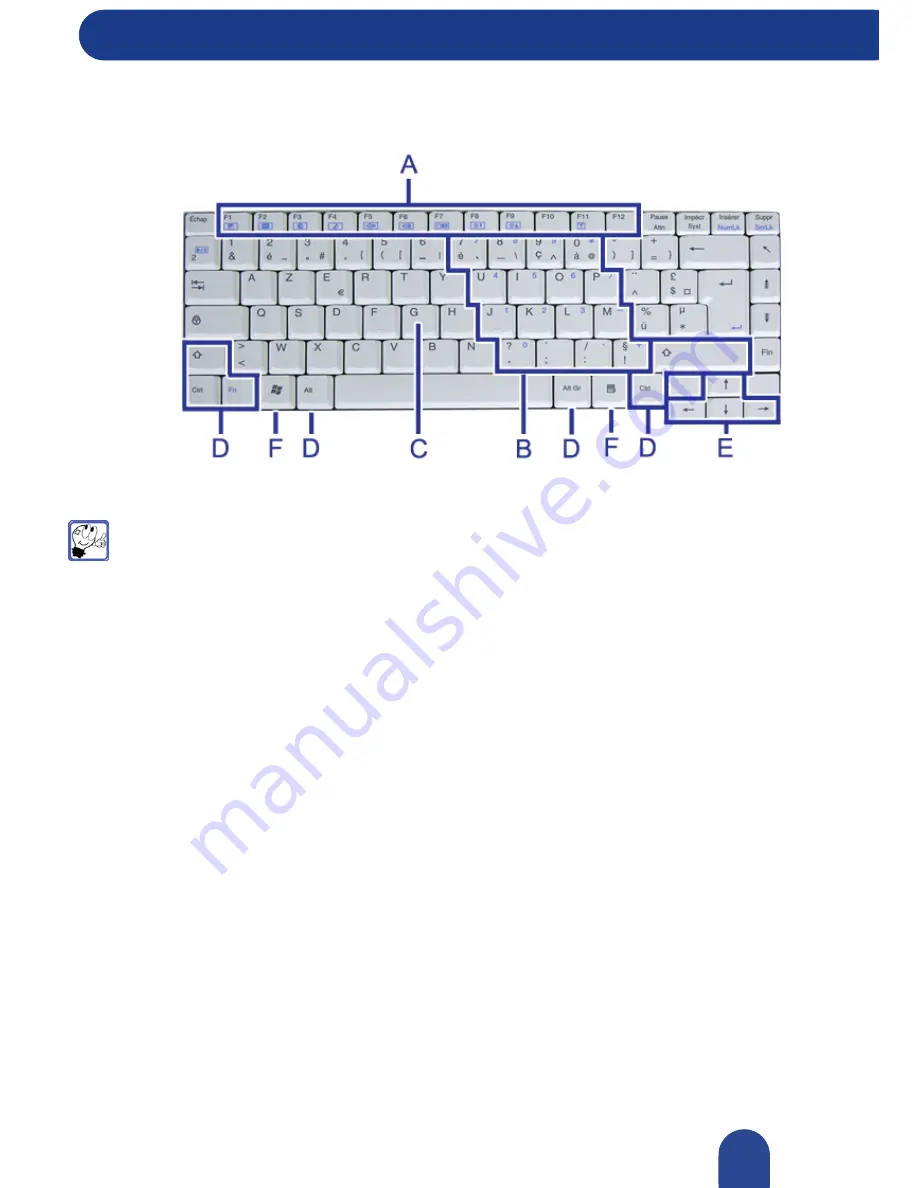
Discovering Your Computer
© 2007-2009, NEC Computers S.A.S. All rights reserved.
Using the Keyboard
Discovering Your Computer
Figure 7: Keyboard
Note:
Depending on the model, the keyboard layout may be slightly different from what is shown.
The keyboard is equipped with many features. These include:
A
Function Keys - Twelve function keys, F1 through F12, are available on the notebook keyboard. These
keys work together with the Fn key to activate special functions. Some of these keys (printed in blue)
are pre-programmed with dual functions.
Function keys are application-driven. See the specific application's user guide for information about
how each function key works within the application you are using.
Refer to
"Keyboard""Keyboard"
for more information about the function key combinations pre-
programmed for your notebook computer.
B
Numeric Keypad - Pressing Num Lock (in colour) on the keyboard activates the numeric keypad
numbers and functions printed in blue on the bottom right corner of the keys.
The keypad lets you type numbers and mathematical operands (+, -) as you would on a calculator. The
keypad is ideal for entering long lists of numbers.
When you press Num Lock (in colour) again, the keys revert to their normal functions as typewriter
keys.
C
Typewriter Keys - Typewriter keys (also called alphanumeric keys) are used to enter text and
characters. Keys with blue print on them behave differently when combined with control keys or the
Fn key.
D
Control Keys - Ctrl, Alt, Fn, Alt Gr and Shift are controls used in conjunction with other keys to
change their functions. To use control keys, press and hold the control key while pressing another key.
For example, "Press Ctrl c" means to hold down the Ctrl key and press the c key. Key combinations are
specific to the application you are running.
31
















































